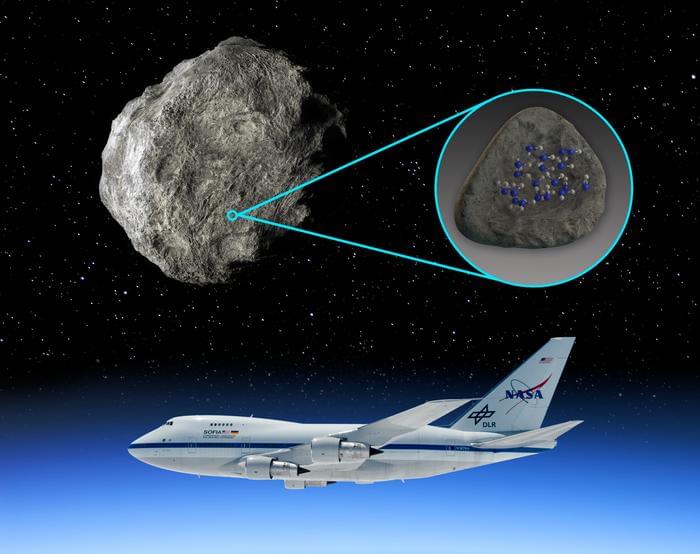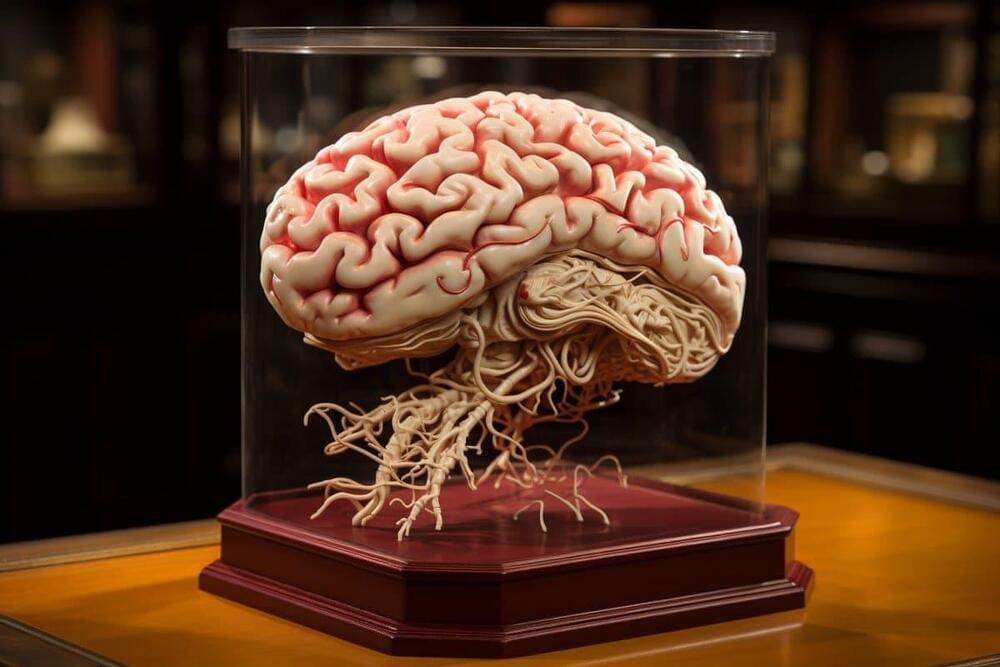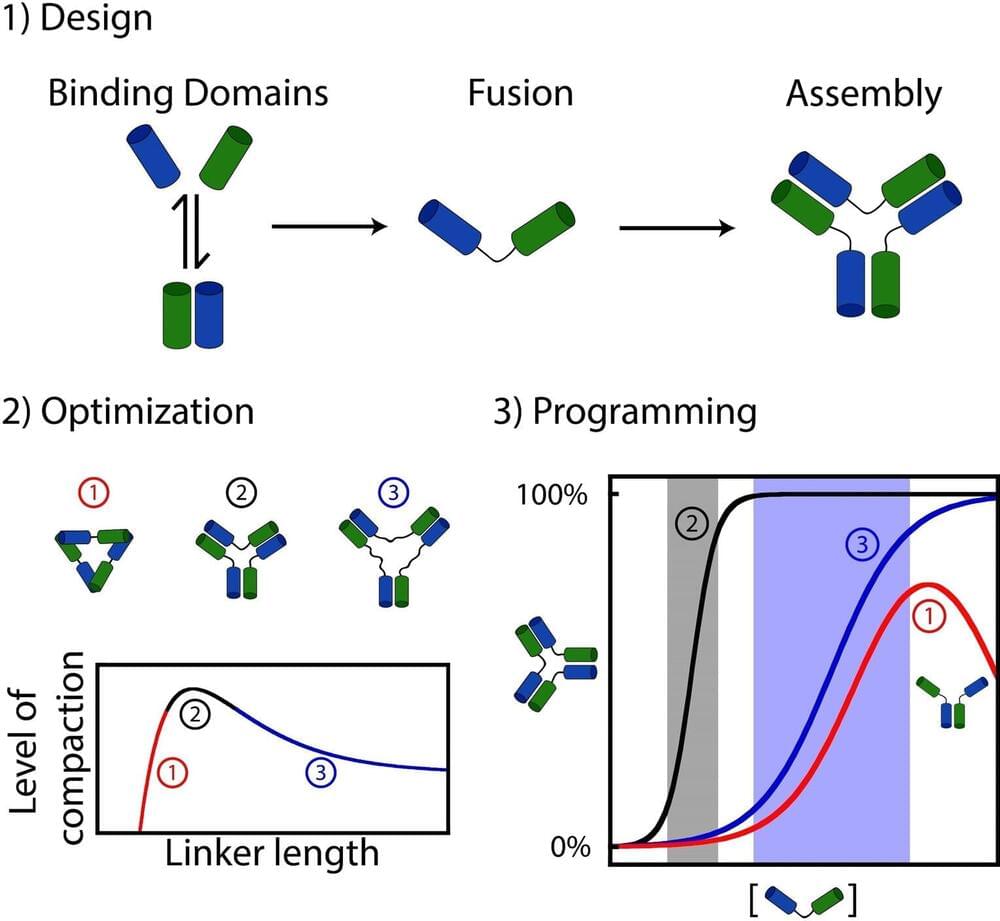EROSITA telescope shows galaxies’ “clumpiness” matches predicted effect of dark energy, dark matter.



Asteroids are frequently associated with being large chucks of rocks and nothing else. However, a recent study published in The Planetary Science Journal could change that as a team of researchers led by the Southwest Research Institute (SwRI) have discovered water molecules on an asteroid’s surface, marking a first-of-its-kind discovery that could help scientists use asteroids to better understand the formation and evolution of the early solar system and other exoplanetary systems, as well. This is because dry asteroids typically form close to the Sun while icy asteroids form much farther out.
“Asteroids are leftovers from the planetary formation process, so their compositions vary depending on where they formed in the solar nebula,” said Dr. Anicia Arredondo, who is a SwRI Research Scientist and lead author of the study. “Of particular interest is the distribution of water on asteroids, because that can shed light on how water was delivered to Earth.”
For the study, the researchers used the FORCAST (Faint Object infraRed CAmera for the SOFIA Telescope) instrument onboard the SOFIA (Stratospheric Observatory for Infrared Astronomy) aircraft to analyze four asteroids: Iris, (11) Parthenope, (18) Melpomene, and (20) Massalia. In the end, the team discovered levels of water molecules on Iris and Massalia that are consistent with levels of water molecules that have been previously identified on the sunlit portion of the Earth’s Moon using FORCAST and SOFIA, as well. The reason the team could not conclude that Parthenope and Melpomene contained water molecules was due to the unacceptable noise levels within the data.

Summary: Researchers developed 20 novel recombinant rabies viral vectors that present unparalleled advantages for neural circuit mapping in aging and Alzheimer’s disease studies. These vectors are engineered to highlight microstructural changes in brain neurons through enhanced fluorescent proteins, offering insights into neural networks at both micro and macro scales.
The vectors’ unique ability to target specific neuron components and perform live imaging makes them potent tools for dissecting neural circuitry in healthy and diseased states. This innovation opens new pathways for targeted treatment strategies and will be shared with the neuroscience community through UCI’s Center for Neural Circuit Mapping.
Join us on Patreon! https://www.patreon.com/MichaelLustgartenPhDDiscount Links: NAD+ Quantification: https://www.jinfiniti.com/intracellular-nad-test/Use Cod…
A halloween eve exploration of two of the spookiest solutions to the Fermi Paradox. The Dark Forest Hypothesis and the Berserker Hypothesis.
My Patreon Page:
/ johnmichaelgodier.
My Event Horizon Channel:
/ eventhorizonshow.
Music.
And exploration of the The Unintended Consequences of Artificial Intelligence. My Patreon Page: https://www.patreon.com/johnmichaelgodierMy Event Horizon Chan…
Some of the most bizarre and interesting objects in the Universe are stars. Let’s go on a journey and discover what happens when physics is taken to the most extreme.
Chapters:
00:00 Intro.
03:33 Red dwarfs.
04:53 White dwarfs.
06:39 Black Dwarfs.
08:15 Neutron stars.
13:36 Quark stars.
15:58 Strange stars.
16:35 Electroweak stars.
17:38 Planck stars.
Sources:
All about star birth, life, and death:
https://en.wikipedia.org/wiki/Stellar…
About neutron stars:
https://www.space.com/22180-neutron-s…
What happens inside a black hole? Nobody knows!
https://www.space.com/what-happens-bl…
What is a Planck star? — Ask a Spaceman! Dr. Paul M. Sutter.

Published in Angewandte Chemie, their findings promise to provide chemists and nanotechnologists with a simple strategy to create the next generation of dynamic nanosystems.
Life on Earth is sustained by millions of different tiny nanostructures or nanomachines that have evolved over millions of years, explained Alexis Vallée-Bélisle, a UdeM professor and principal investigator of the study.
In the short term, CSI technology enables an entirely new form of communication in which thoughtful deliberations can be conducted among groups of nearly any size. This has potential to enhance a wide range of fields from enterprise collaboration and market research to large-scale civic engagement.
In the longer term, this approach could enable a new pathway to superintelligence that is inherently aligned with human values, morals and sensibilities. Of course, companies like OpenAI and Anthropic should keep working around the clock to instill their AI models with human values and interests, but others should be pursuing alternative methods that amplify rather than replace human intelligence. One alternative is Collective Superintelligence, which looks far more feasible today than in years past.
Louis Rosenberg is a longtime technologist in the fields of AI and VR. He is known for founding early VR company Immersion in 1993, Unanimous AI in 2014, and for developing the first mixed reality system as a researcher for the U.S. Air Force.
An exploration of the implications of immortal alien civilizations. My Patreon Page: https://www.patreon.com/johnmichaelgodierMy Event Horizon Channel: https://…